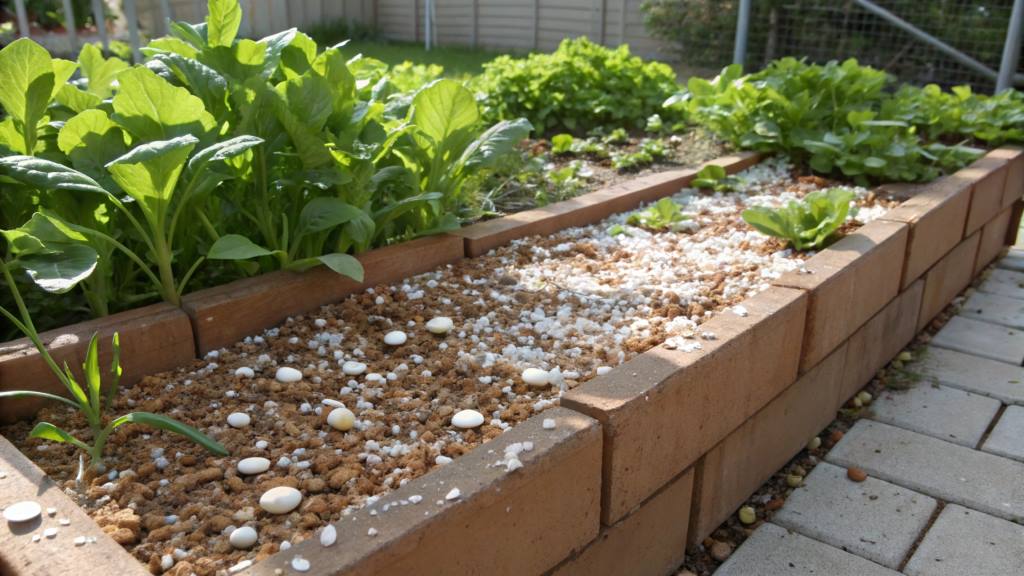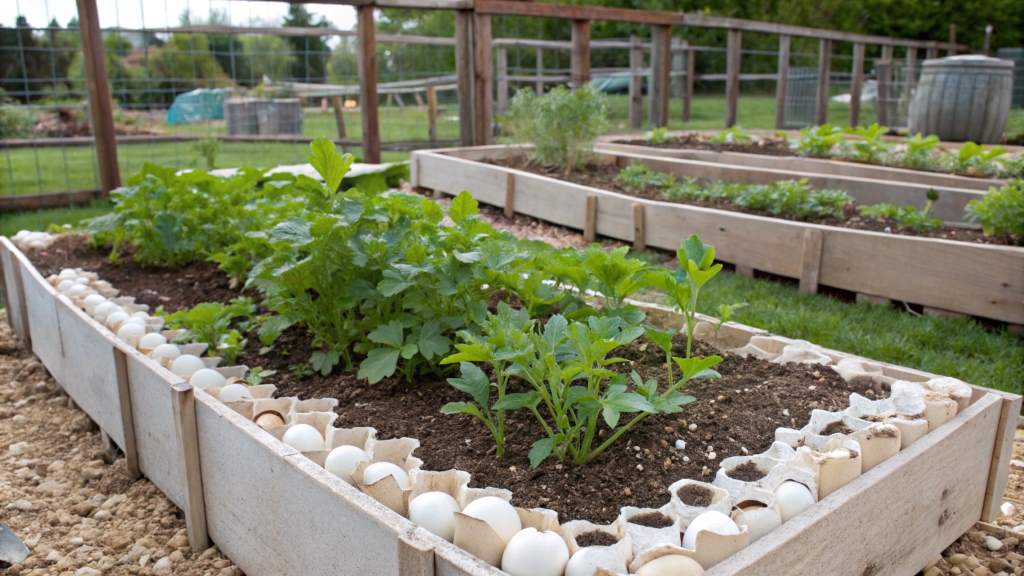
Homemade Eggshell Barrier for Slug and Snail Prevention in Raised Beds
Gardening enthusiasts constantly battle pests that threaten their flourishing plants. Slugs and snails, known for their voracious appetite for tender greens, are notorious for destroying crops overnight. A homemade eggshell barrier for slug and snail prevention offers a simple, eco-friendly solution to this age-old problem, ensuring your raised beds thrive without harmful chemicals. By reusing household waste, this method aligns with sustainable gardening practices, providing both efficiency and environmental benefits.
To explore sustainable gardening solutions, explore Begardenly. Let’s delve into why eggshell barriers are a game-changer for your raised beds and how you can create your own.
Why Use Eggshells to Deter Slugs and Snails?
Eggshells have a unique texture that makes them effective as barriers. Their sharp edges can irritate or deter the soft-bodied pests, keeping them from venturing into your raised beds. This method is rooted in biology: the delicate undersides of slugs and snails cannot comfortably traverse rough surfaces.
Moreover, eggshells are rich in calcium and other minerals, slowly enriching the soil as they decompose. Using eggshells in the garden addresses pest control while contributing to long-term soil health.

How Effective Are Eggshell Barriers?
While opinions vary, many gardeners swear by the effectiveness of eggshell barriers. Studies and anecdotal evidence suggest they work best in combination with other preventive measures. For instance, researchers from the University of California emphasize integrated pest management, encouraging a mix of physical barriers and natural predators to keep pest populations in check.
However, for slugs and snails, anecdotal experiences often reveal eggshells alone can reduce damage significantly when the soil is dry and barriers are well-maintained.
Preparing a Homemade Eggshell Barrier
Creating an eggshell barrier is straightforward:
- Collect Eggshells: Save shells from kitchen scraps. Wash and dry them to prevent odors.
- Crush Shells: Break the shells into small, jagged pieces. Avoid pulverizing them into powder as the rough texture is key.
- Form a Barrier: Scatter the crushed shells in a circle around the base of each plant or along the perimeter of your raised beds.
Eggshells should be replenished regularly, especially after rain, to maintain their deterrent properties.
Additional Benefits of Using Eggshells in Gardening
- Enriching Soil: Eggshells break down over time, adding calcium and promoting root health.
- Reducing Waste: Reusing eggshells minimizes kitchen waste, supporting a sustainable lifestyle.
- Attracting Beneficial Microorganisms: As eggshells decompose, they foster an ecosystem of helpful microorganisms, improving soil structure and nutrient availability.
Combining Eggshells with Other Methods
While effective, eggshell barriers are not foolproof. Pair them with these strategies for maximum protection:
- Copper Tape: Its mild electric charge repels slugs and snails.
- Handpicking: Remove visible pests during dawn or dusk.
- Companion Planting: Grow slug-resistant plants like rosemary or fennel near susceptible crops.
- Natural Predators: Encourage birds or frogs to visit your garden for natural pest control.
Real-life Testimonies: Do Eggshell Barriers Work?
Lisa, an avid gardener from Oregon, shares her success: “I noticed a significant reduction in slug damage after spreading eggshells around my lettuce. It’s an effortless and eco-friendly solution that works wonders!”
However, James from the UK cautions, “While eggshells helped in drier months, heavy rain rendered them less effective. I recommend using them alongside other methods like copper tape.”
Are Eggshell Barriers Eco-Friendly?
Yes! Eggshell barriers epitomize sustainability. By repurposing a common kitchen waste product, you reduce landfill contributions while safeguarding your plants naturally. This method eliminates the need for harmful pesticides, protecting the broader ecosystem.
Challenges and Limitations of Eggshell Barriers
- Weather Dependency: Rain can flatten the barrier, reducing its efficacy.
- Labor-Intensive: Regular replenishment is necessary, especially in large gardens.
- Not a Cure-All: Persistent infestations may require complementary methods.
Despite these challenges, eggshells remain a low-cost, beginner-friendly option for slug and snail prevention.
Exploring the Role of Overgrown Hebe in Attracting Pests
Gardens with an overgrown hebe often provide shelter for slugs and snails. Pruning these shrubs not only promotes healthy growth but also discourages pests from hiding in dense foliage. To learn how to manage hebe, click on https://begardenly.com/gardening-tips/how-do-you-prune-an-overgrown-hebe/.
FAQs
How long does an eggshell barrier last?
Eggshell barriers typically last a few weeks but need regular maintenance, especially after rain or heavy watering.
Can eggshell barriers harm plants?
No, eggshell barriers are safe and even beneficial for soil health. They add calcium as they decompose.
Do I need to sterilize eggshells before use?
While not mandatory, washing eggshells removes odors and reduces the risk of attracting pests like rodents.
Are there alternatives to eggshells for pest control?
Yes, consider copper tape, diatomaceous earth, or mulch to deter slugs and snails.
Can I use eggshell barriers in rainy climates?
Rain reduces the efficacy of eggshell barriers. Combine them with raised beds or sheltered plantings for better results.
Are there plants resistant to slugs and snails?
Yes, herbs like lavender, rosemary, and thyme are less appealing to these pests.
Conclusion
A homemade eggshell barrier for slug and snail prevention is a smart, eco-conscious way to protect your raised beds. Combining simplicity and sustainability, it aligns with modern gardening trends that prioritize organic and environmentally friendly methods. By embracing this approach and integrating complementary strategies, you can cultivate a thriving, pest-free garden.



